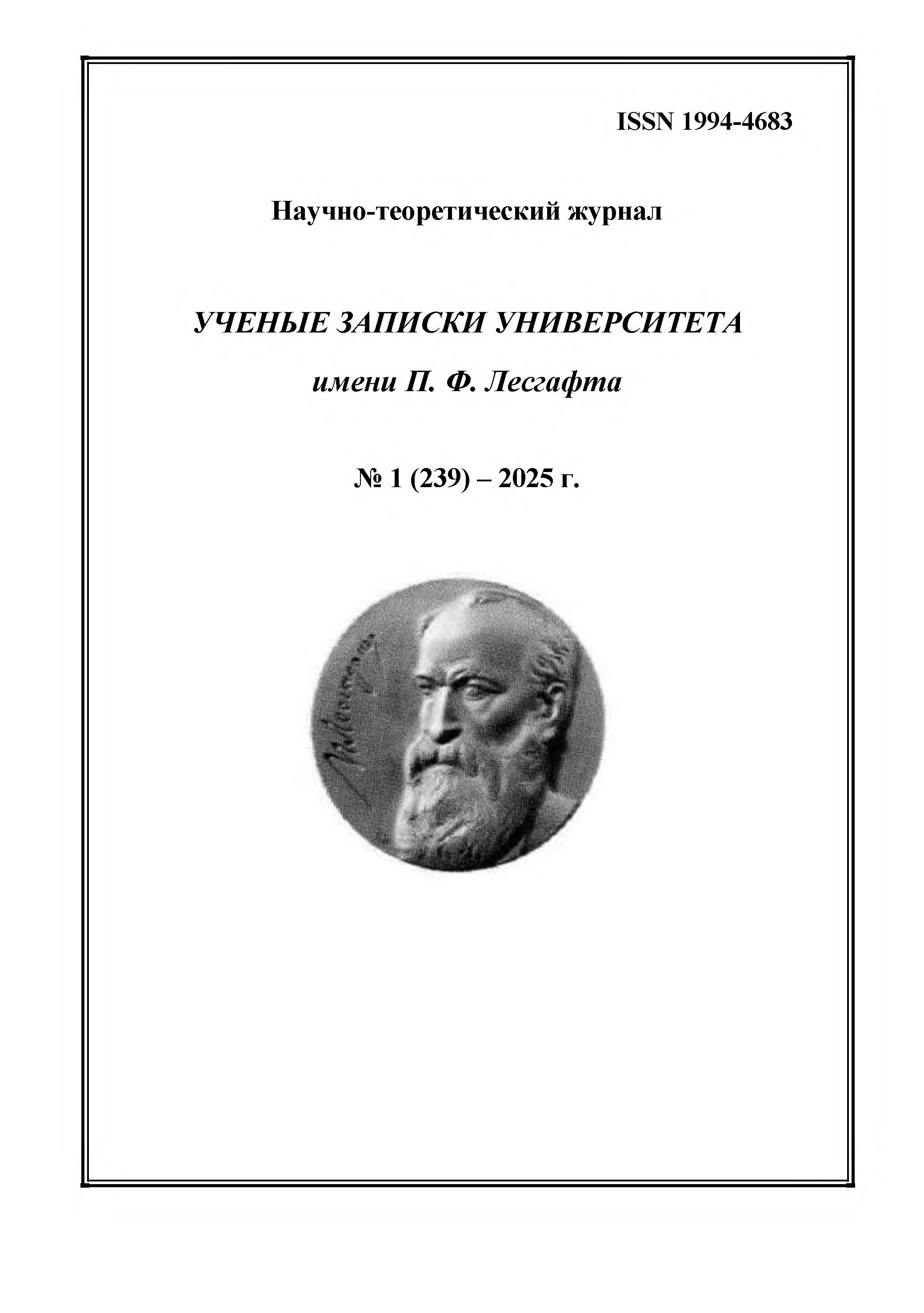graduate student from 01.01.2021 until now
Petrozavodsk, Petrozavodsk, Russian Federation
CSCSTI 77.01
The purpose of the study is to investigate the relationship between the volume and frequency of motor activity and the results of executive function testing ("updating", "inhibition", "switching"). Research methods and organization. To formulate the hypothesis and plan the experimental part of the study, theoretical analysis and summarization of scientific literature were used. Executive functions were tested using neurocognitive tests: the Stroop test, WCST, and the Corsi test; motor activity was assessed according to the IPAQ methodology. Data analysis using mathematical and statistical tools included correlation and variance analysis. Research results and conclusions. The results of the conducted study indicate that certain components of executive functions, specifically 'inhibition' and 'switching', are positively correlated with indicators of motor activity, as confirmed by correlation analysis and the application of the statistical method ANOVA. The results obtained make a significant contribution to confirming the hypothesis regarding the positive influence of motor activity on the cognitive domain of an individual.
executive functions, motor activity, physical activity, cognitive abilities
1. Sechenov I. M. (2016), “Reflexes of the brain: an attempt to reduce the method of origin of mental phenomena to a physiological basis”, with the biography of I. M. Sechenov, Moscow, LIBROCOM, 128 p., ISBN 978-5-9710-3314-1.
2. Kuznetsov O. Yu., Petrova G. S. (2013), “Physiological bases of stimulation of activity of intellectual activity of students by means of physical training”, Bulletin of Tula State University, Humanities, no. 1, pp. 357–362.
3. Bloomberg M. [et al.] (2024), “Associations of accelerometer-measured physical activity, sedentary behaviour, and sleep with next-day cognitive performance in older adults: a micro-longitudinal study”, International Journal of Behavioral Nutrition and Physical Activity, vol. 21, no. 1, Article number 133, DOIhttps://doi.org/10.1186/s12966-024-01683-7.
4. Huang X., Zhao X., Li B., Cai Y., Zhang S., Wan Q., Yu F. (2022), “Comparative efficacy of various exercise interventions on cognitive function in patients with mild cognitive impairment or dementia: a systematic review and network meta-analysis”, Journal of sport and health science, vol. 11, no. 2, pp. 212–223, DOIhttps://doi.org/10.1016/j.jshs.2021.05.003.
5. Salas-Gomez D., Fernandez-Gorgojo M., Pozueta A., Diaz-Ceballos I., Lamarain M., Perez C., Sanchez-Juan P. (2020), “Physical activity is associated with better executive function in university students”, Frontiers in Human Neuroscience, no. 14, p. 11, DOIhttps://doi.org/10.3389/fnhum.2020.00011.
6. Vilenskaya G. A. (2022), “Executive functions”, Psychological journal, Vol. 37, No 4, pp. 21–31.
7. Miyake A., Friedman N. P., Emerson M. J., Witzki A. H., Howerter A., Wager T. D. (2000), “The unity and diversity of executive functions and their contributions to complex “frontal lobe” tasks: A latent variable analysis”, Cognitive psychology, 41 (1), pp. 49–100.
8. Sutormina N. V. (2022), “The role of brain-derived neurotrophic factor (BDNF) in physical activity (review)”, Comprehensive Studies in Childhood, V. 4, No 2, pp. 124–133, DOIhttps://doi.org/10.33910/2687-0223-2022-4-2-124-133.
9. Hu M., Zeng N., Gu Z., Zheng Y., Xu K. [et al.] (2021), “Short-term high-intensity interval exercise promotes motor cortex plasticity and executive function in sedentary females”, Frontiers in Human Neuroscience, vol. 15, 620958, DOIhttps://doi.org/10.3389/fnhum.2021.620958.
10. Penna L. G., Pinheiro J. P., Ramalho S. H. R., Ribeiro C. F. (2021), “Effects of aerobic physical exercise on neuroplasticity after stroke: systematic review”, Arquivos de neuro-psiquiatria, vol. 79, no. 9, pp. 832–843, DOIhttps://doi.org/10.1590/0004-282x-anp-2020-0551.
11. Faria C. D. A., Alves H. V. D., Charchat-Fichman H. (2015), “The most frequently used tests for assessing executive functions in aging”, Dementia & neuropsychologia, vol. 9, no. 2, pp. 149–155.
12. Berch D. B., Krikorian R., Huha E. M. (1998), “The Corsi block-tapping task: Methodological and theoretical considerations”, Brain and cognition, V. 38, No 3, pp. 317–338, DOIhttps://doi.org/10.1006/brcg.1998.1039.
13. Friedman N. P., Miyake A. (2017), “Unity and diversity of executive functions: Individual differences as a window on cognitive structure”, Cortex, V. 86, pp. 186–204, DOIhttps://doi.org/10.1016/j.cortex.2016.04.023.
14. Joseph K. L., Dagfinrud H., Christie A., Hagen K. B., Tveter A. T. (2021), “Criterion validity of The International Physical Activity Questionnaire-Short Form (IPAQ-SF) for use in clinical practice in patients with osteoarthritis”, BMC musculoskeletal disorders, V. 22, pp. 1–9, DOIhttps://doi.org/10.1186/s12891-021-04069-z.







